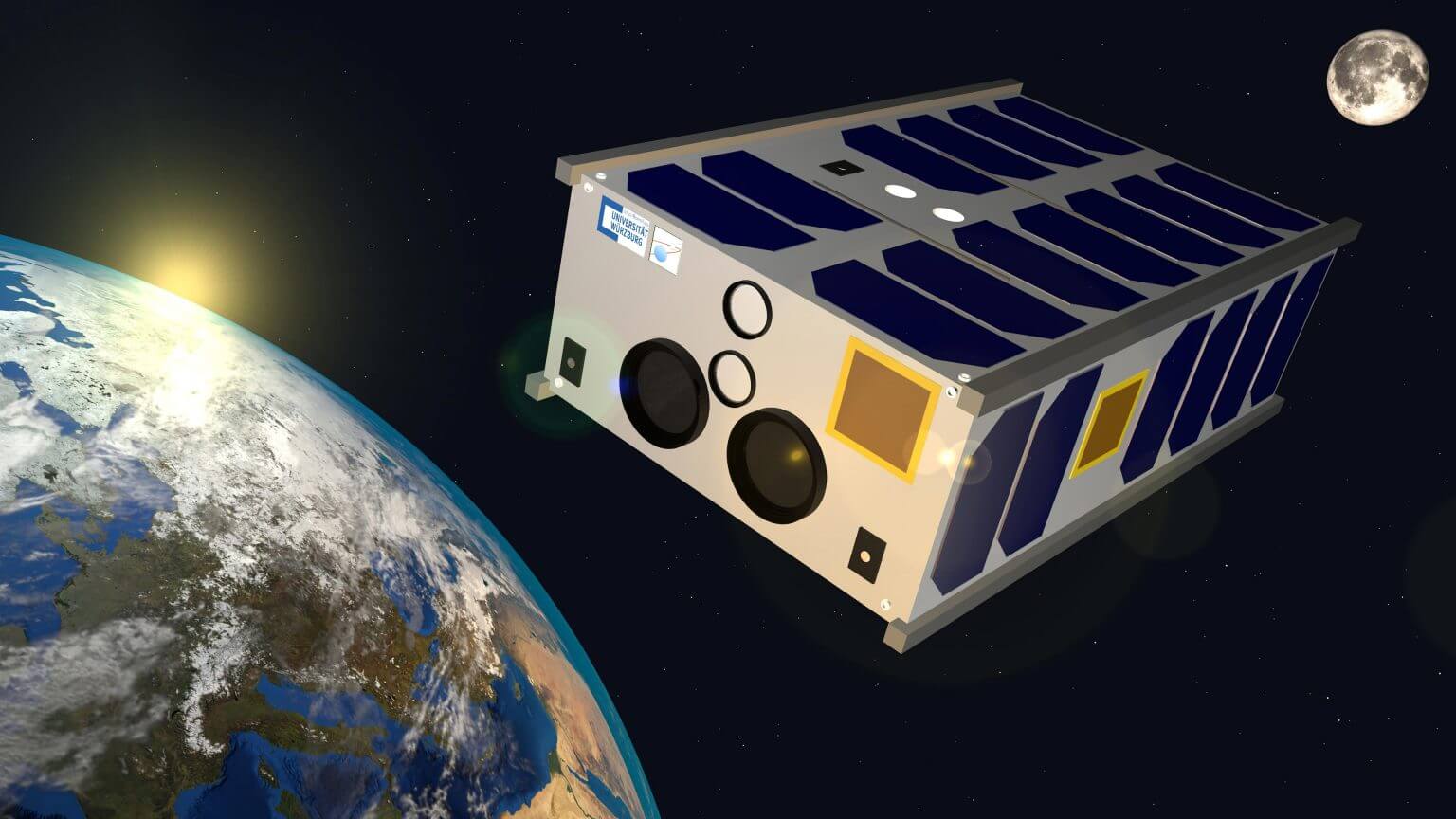Building an artificially intelligent satellite trained in space: Professor Hakan Kayal of the University of Würzburg has received a budget of 2.6 million euros from the German Ministry of Economic Affairs and Energy.
From: University of Würzburg. Translation: Avi Blizovsky
SONATE-2 in orbit: imaging of the new satellite to test artificial intelligence technology that will allow them to be more autonomous. Illustration: Kahn Kayel / University of Würzburg

Suddenly circular holes were observed on the surface of Mars that were not there before. In images of Saturn's moon, Enceladus, geysers were discovered that created powerful fountains of steam towards space. Also, in photographs broadcast to Israel from the Curiosity rover on Mars, structures were found that look like fossilized worms.
All these phenomena, some of which seem temporary, were discovered by chance or because of the time it takes to transmit the image from the neighboring planets to Earth. "Artificial intelligence technologies will make it much easier to detect anomalies that were previously unknown," says Hakan Keil, professor of space technology at the Julius-Maximilians-Universität (JMU) in the city of Wurzburg in Bavaria, Germany.
Science in the making
According to Prof. Kayel, the use of artificial intelligence (AI) in astronautics is a field that is still in its infancy: "There are only a handful of projects in this field."
If AI is used to detect unknown phenomena, the system must be taught the skill first. You have to enter what is known for the satellite to detect the unknown. "There are already satellites that use artificial intelligence for their operation, but the training of their artificial intelligence systems was done on Earth and then sent into space. However, we have other plans: we want to train the AI on board a small satellite in space conditions", says Professor Kayal.
This project is challenging, but possible: "Tiny IT (Information Technology) systems are becoming more and more powerful. We allocate the time to the training of the artificial intelligence so that the learning process in the track can last several days".
An interplanetary expedition is a long-term goal
But why transfer AI training to space, to miniaturized computers? Since it is much easier to do this on the ground using mainframe computers (powerful commercial computers) on the ground? This is because Kayal has a clear vision for the future. He wants to use small satellites with AI not only to observe the Earth, but also for interplanetary missions - to discover new phenomena, perhaps even traces of extraterrestrial intelligence.
"Once you pass through the interplanetary medium, communication with the satellite becomes a bottleneck," says the professor. As the distance between the spacecraft and the Earth increases, the data transfer takes longer, "it is not possible to continue sending the data back and forth. Therefore the artificial intelligence must be able to learn independently of the satellite. And she should report to Earth only about relevant discoveries."
The launch of the satellite into orbit is expected in 2024
Kayal's team led by project leader Oleksii Balagorin will activate this technology on the small satellite -SONATE-2 and test it in orbit. The Federal Ministry of Economy and Energy finances the project with 2.6 million euros. The project started on March 1, 2021; This satellite will be launched into orbit in the spring of 2024. The mission is planned to last one year.
The small satellite from Wurzburg will be about the size of a shoebox (10x20x30 cm). The satellite's cameras will photograph the Earth in a wide spectrum range. The image data will flow into the artificial intelligence system inside the satellite which will automatically identify and classify objects. The technology will first be thoroughly tested around Earth, before it can be used in later interplanetary travel. Kayal already has a name for the future mission SONATE-X. In his research program the X is from the English word aliens.
Students can participate
SONATE-2 will have highly innovative autonomous features on board. Compared to the previous satellite - SONATE, the data processing system of the sensor will be more miniaturized and will be more energy efficient. In addition, there are new types of satellite bus components, such as improved star sensors for autonomous orbit control. The cameras will not only detect and record static objects, but also short or transient phenomena such as lightning or meteors.
The SONATE-2 team will include about ten people. Students can also participate - as assistants or within groups of graduates and researchers. The training of the next generation in this advanced technology is an important component of the project. In addition to its computer science programs, JMU offers a graduate program in space informatics and a master's program in satellite technology.
The SONATE-2 project is funded by the German Aerospace Agency (DLR) with funding from the Federal Office for Economic Affairs and Energy (BMWi) based on a resolution of the German Bundestag (FKZ 50RU2100).
The new SONATE-2 satellite is based on a successful project of its predecessor, the SONATE satellite - which was also developed and built by Kayel's team, also funded by the Federal Ministry of Economy and Energy.
More of the topic in Hayadan:

2 תגובות
Unsupervised learning is a worthy topic. Especially in conditions where there is no classified data to train on.
It's just not clear to me what is the advantage of operating the system in space?
I have been an AI researcher/expert for 30+ years. It makes me laugh every time a startup or an academic/industrial researcher compiles the research topic/product in Buzzword AI. For me, any code that has an intersection with the keyword IF is AI. Of course the intelligence of this code is no more than that of an amoeba, but it is still AI. It was hoped that the researcher raised money for his research but let's take it in the right proportions. This does not mean that AI is not subject to a paradigm of Darwinism on the contrary but we are not there yet.